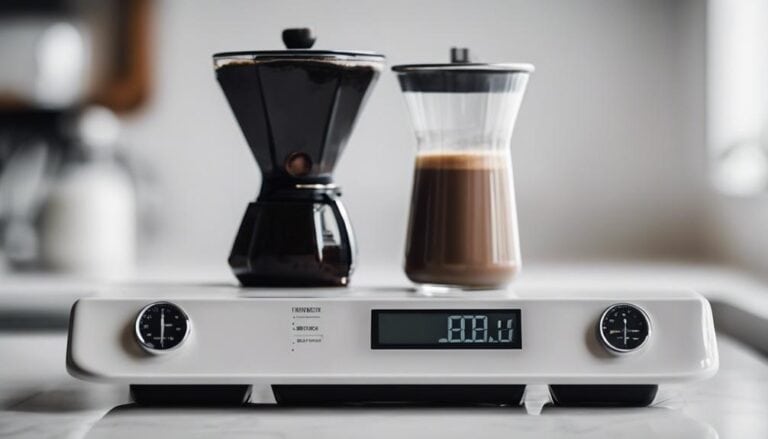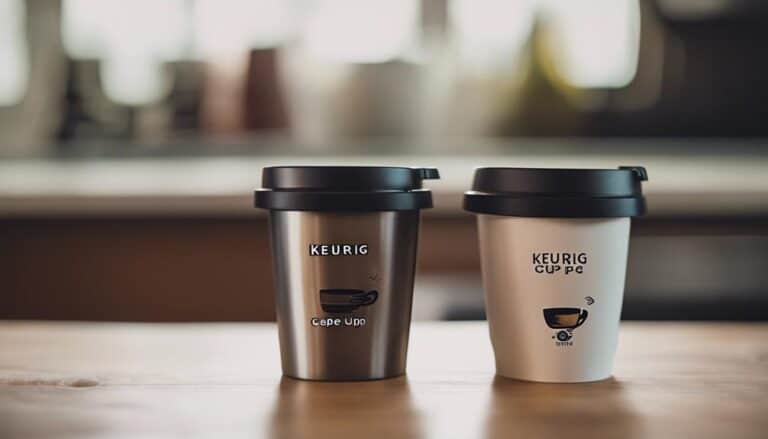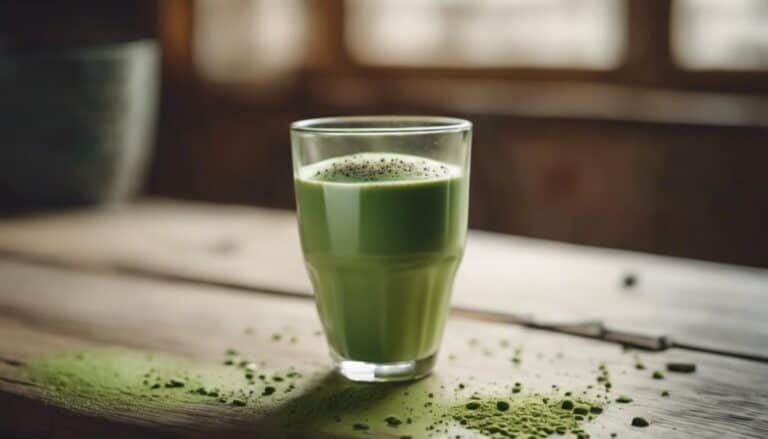Perfect Percolator Coffee: Brewing Tips
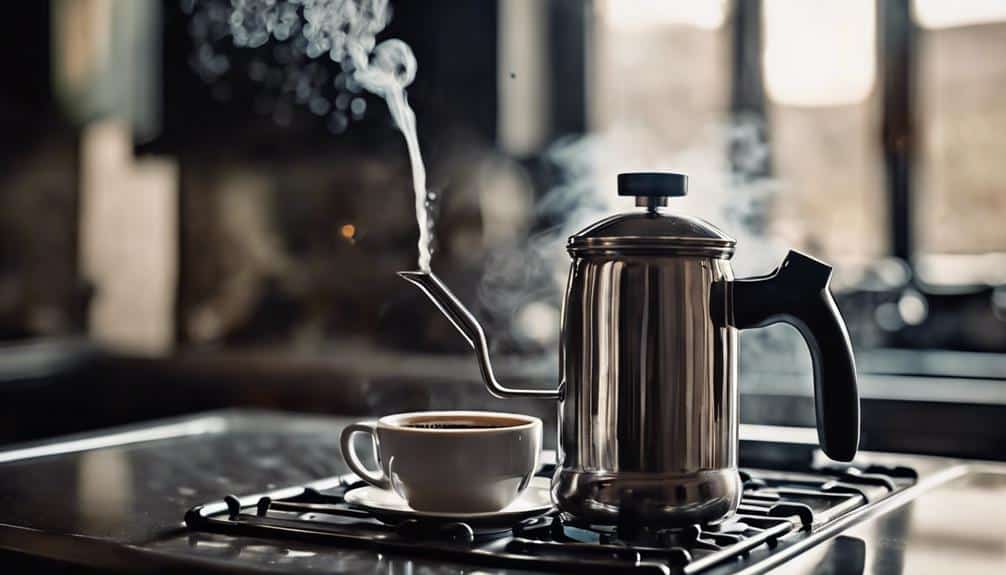
When it comes to achieving the perfect cup of percolator coffee, precision is essential. The process involves a delicate balance of factors that contribute to the rich and robust flavor profiles that coffee enthusiasts crave. From selecting the right beans to mastering the brewing time, each step plays a vital role in the final result. So, let's explore the intricate details and nuances that make all the difference in creating that ideal cup of percolator coffee.
Selecting the Right Percolator
When selecting the perfect percolator for your coffee brewing needs, prioritize stainless steel models for durability and non-toxic brewing. Stainless steel percolators not only withstand the test of time but also guarantee that your coffee is free from harmful chemicals often found in other materials.
The basket and stem of a percolator are vital components that directly impact the quality of your brew. Opt for a percolator with a well-designed basket to hold the ground coffee effectively, allowing for proper extraction of flavors. Additionally, a removable stem is essential for easy cleaning, ensuring that your percolator remains in top condition for brewing delicious coffee every time.
Choosing the Best Coffee Beans
To brew the perfect percolator coffee, selecting high-quality coffee beans is essential for achieving an exceptional flavor profile. Opt for coffee beans with a medium to dark roast to guarantee a robust and well-rounded taste in every cup.
Look for beans sourced from regions like Africa, Central/South America, and Indonesia for a variety of flavor profiles that can add depth to your brew. Choosing freshly ground beans is vital as it preserves the beans' natural oils and flavors, resulting in a more aromatic and flavorful coffee.
When grinding the beans, aim for a coarse grind to prevent over-extraction during the brewing process, which can lead to a bitter taste. Experimenting with different coffee bean blends can be an exciting journey to discover unique taste profiles that suit your palate best.
Grinding Beans to Perfection
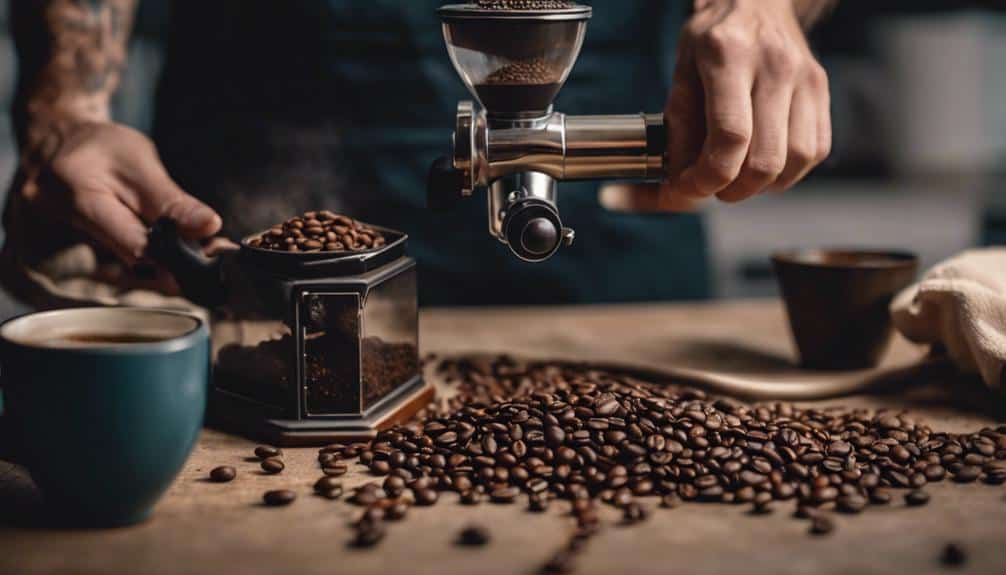
Grinding coffee beans to perfection is an essential step in revealing the full flavor potential of your percolator coffee. To achieve that perfect cup, it's important to grind your beans to a coarse texture. This coarseness is key to preventing over-extraction, which can lead to bitterness in your brew. For best results, using a grinder like NutriBullet can help you achieve the ideal consistency for your percolator.
Freshness is another critical factor when it comes to grinding your beans. By grinding them just before brewing, you make sure that the flavors are at their peak, resulting in a more vibrant and flavorful cup of coffee. The coarse grounds play a crucial role during percolation, allowing the water to flow through evenly and extract the rich flavors without overpowering bitterness.
Assembling Your Percolator
Before proceeding to brew your perfect cup of percolator coffee, it's important to make sure that each component of your percolator is assembled correctly. Start by ensuring that the percolator base is securely attached to the stem. Next, place the coffee grounds basket inside the percolator base, making sure it sits snugly. Properly close the basket lid to prevent any grounds from escaping during the brewing process. It's vital to check that the percolator top fits securely over the stem to create a tight seal, ensuring ideal brewing conditions.
When assembling your percolator, attention to detail is key. Take the time to double-check that all components are correctly put together before starting the brewing process. This meticulous approach will help you avoid any potential leaks or spills during brewing, ensuring a smooth and enjoyable coffee-making experience. By following these assembling guidelines, you set the stage for brewing a delicious and satisfying cup of percolator coffee.
Brewing Process and Timing

When it comes to percolator coffee brewing, timing is crucial. Getting the water temperature right and not rushing the brewing process are essential for a perfect cup.
Let's make sure we give the coffee grounds the time they need to work their magic.
Timing Is Key
Timing plays an essential role in the percolator coffee brewing process, directly impacting the flavor and strength of your brew. When it comes to perfecting your cup of joe, getting the brewing time just right is key.
Here are three important points to keep in mind:
- Brewing Time Range: The ideal brewing time typically falls between 5 to 10 minutes, ensuring the extraction of rich flavors from the coffee grounds.
- Customization: Adjusting the brewing time allows you to tailor the strength of your coffee to match your taste preferences perfectly.
- Avoid Over-Extraction: Monitoring the percolation process closely is vital to prevent over-extraction, which can lead to a bitter taste. Remove the percolator from heat promptly once the desired brewing time is reached to achieve a well-balanced brew.
Water Temperature Matters
Maintaining the ideal water temperature range between 195-200°F is essential for achieving excellent coffee extraction and a flavorful brew in percolator coffee brewing. The water temperature plays a vital role in extracting the right flavors from the coffee grounds. Too hot, and you risk a bitter taste; too cold, and the extraction may be inadequate.
Using a thermometer to monitor the water temperature guarantees precision throughout the brewing process. Controlling the water temperature during percolation allows for adjustments in brewing time and the final flavor profile of the coffee. By mastering the water temperature in your percolator, you discover the key to a consistently delicious cup of coffee that suits your taste preferences perfectly.
Don't Rush Brewing
Brewing percolator coffee demands a deliberate pace to reveal its full flavor potential. When it comes to the brewing time, patience isn't just a virtue; it's a necessity for extracting the rich essence of the coffee beans. Here's why taking your time matters:
- Optimal Extraction: Allowing the coffee to percolate for the recommended 5 to 10 minutes guarantees that every nuance of flavor is extracted, resulting in a more satisfying cup.
- Avoid Weak Brews: Rushing the process leads to under-extracted coffee, leaving you with a weaker taste that fails to capture the true essence of the beans.
- Embrace Patience: Embrace the art of patience in brewing; it's the key to revealing a well-balanced and robust flavor profile that will elevate your coffee experience.
Serving and Enjoying Your Coffee
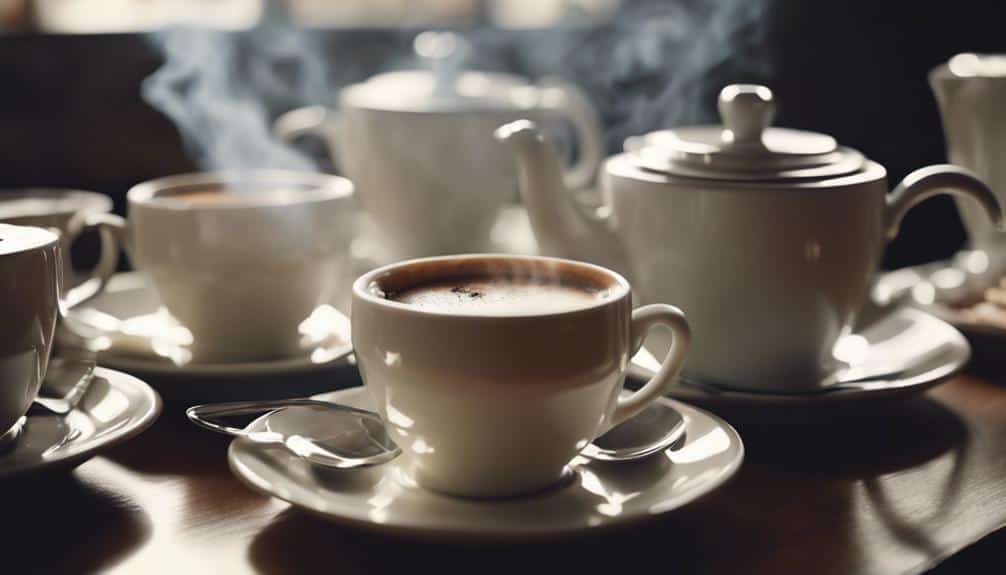
Savoring the rich aroma and bold flavor of freshly percolated coffee is a delightful experience that enhances any moment. After brewing, it's important to let the percolated coffee rest for a minute. This short pause allows the grounds to settle, guaranteeing a smoother and more enjoyable drinking experience. When serving, pour the coffee slowly into your cup to prevent any sediment from entering, preserving the purity of the brew.
To truly make the most of your percolator coffee, don't hesitate to customize it to your liking. Whether you prefer a touch of sugar, a splash of milk, or any other additives, tailoring your coffee to suit your taste preferences can elevate your enjoyment. Remember, a clean percolator is key to maintaining the integrity of your brews. Thoroughly cleaning the percolator after each use ensures that your coffee continues to delight with its rich flavors.
Share the joy of percolated coffee with loved ones to spread the love for this classic brewing method. Enjoy each cup to the fullest and relish every sip of this timeless beverage.
Conclusion
To sum up, mastering the art of brewing the perfect cup of percolator coffee requires attention to detail and the right tools.
By selecting a stainless steel percolator, choosing high-quality coffee beans, grinding them to the right texture, assembling the percolator correctly, and following the brewing process carefully, you can enjoy a rich and flavorful cup of coffee every time.
Elevate your coffee experience with these tips and savor the delicious results.

